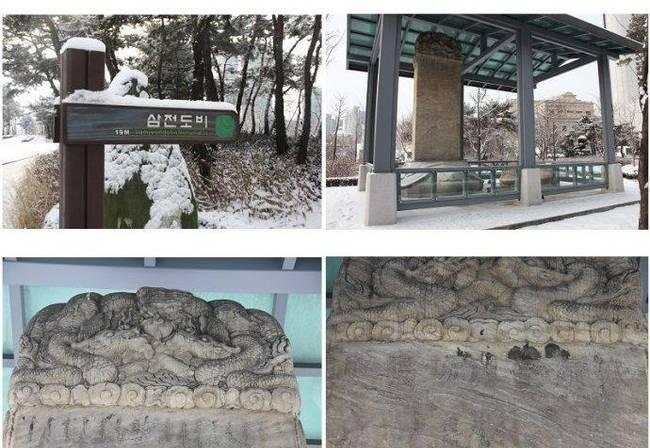
In the summer of 1963, after the floods in the Sandadu area of Songpo District, Seoul (Seoul), Seoul ( Seoul ) , South Korea , receded , a stone stele appeared in front of people. This is not an ordinary stone stele, the full name is "Great Qing Emperor Meritorious Monument", because it is located in The Samdadu in Songpo District, Seoul Special City, so it is also called the "Samdadu Monument". The stele stood until it was torn down by the Kaihua Party during the Sino-Japanese War, and was buried in the ground in 1956 until it was washed away by floods again in 1963.
In recent years, Koreans have repeatedly tried to tear down the stele, and spray painting is a common occurrence. How much hatred is this, and what is the untold story behind this stele? This has to start with "C-seed nonsense". Korea borders the Ming Dynasty and is led by Hou Jin, and if Hou Jin wants to attack the Ming Dynasty, it must consider solving the worries of Korea. In April of the tenth year of Tiancong (1636), Emperor Taiji was proclaimed emperor and changed the name of the country to Daqing.
When the Joseon Dynasty learned of this, it was ready to speculate between the Ming Dynasty and the Qing Dynasty and send a delegation to Shenyang to pay homage, but the emissaries were unwilling to bow down, and the Emperor Taiji was very angry. Emperor Taiji thought that the King of Joseon had done this on purpose, so he wrote to the King of Joseon, "If the King of Er knows that he repents of his sins, he should send his sons as hostages, otherwise he will raise a large army to the land of Er on a certain day of a certain month." ”
On the second day of December of that year, Emperor Taiji personally led an army of 100,000 to attack Korea, and the soldiers pointed directly at the city of Beijing and Hancheng. If the Joseon monarchs were facing a great enemy, Li Brown, the Joseon Emperor Renzu, sent people to negotiate with the Qing army camp on the one hand, and on the other hand, he took refuge in the princess, the minister, and others on Ganghwa Island. He himself led the Wenwu hundred officials to retreat to The Southern Hansan Castle (30 miles east of Seoul), waiting for the arrival of various Qin Wang's armies. But Emperor Taiji had already seen that the connection between Shancheng and the outside world had been cut off, and the Qin King's division had been defeated one after another.
In the first month of the second year of Chongdeok, the desperate King of Joseon announced his surrender, "the various clans resigned, the common honorific title, and the heavens and men returned", officially recognizing the status of the emperor Taiji. Huang Taiji proposed, "Take the eldest son and the other son as the hostage, go to the next year, feng Daqing as Zhengshuo, and pay tribute once a year, gold hundred and two, silver thousand two, white taro cloth 200 horses, various colors of cotton 2000 horses, various colors of fine linen cloth 400 horses, all kinds of fine cloth ten thousand horses, rice ten thousand bags and so on." ”
Subsequently, Emperor Taiji asked the Joseon Dynasty to erect a monument of merit for it and praise its contribution to Korea, which is the "Monument of Merit of the Emperor of the Qing Dynasty". Written in Manchu, Mongolian and Chinese, with Manchu and Mongolian obverse and Han on the back, the stele was erected in 1639 in the Area of Santiandu, where Emperor Taiji was surrendered.
After the Sino-Japanese Sino-Japanese War, the Qing Dynasty and Japan signed the Treaty of Maguan, and the Qing court was forced to recognize that Korea and the Qing Dynasty had broken off the relationship between the lords of the domain. Since then, the stele has suffered many ill-fated and damaged many times.